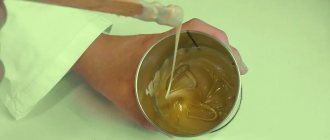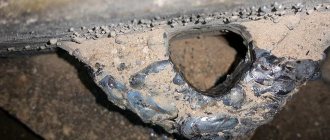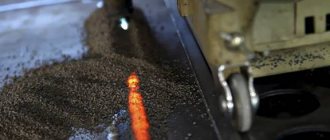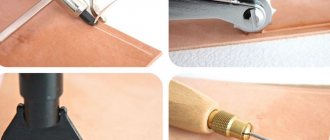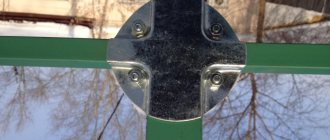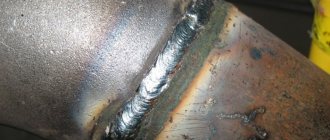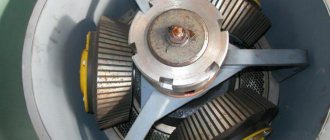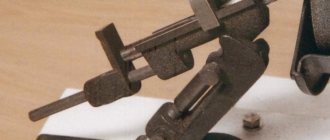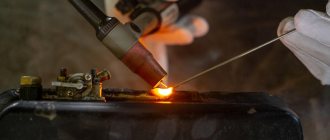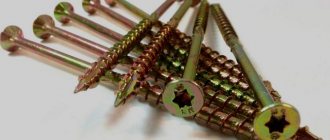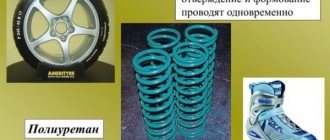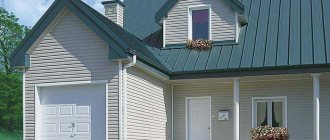Various types of fabrics of various grades and characteristics are made from synthetic PVC threads. There are many options for using these materials. These fabrics are used to make workwear and tracksuits, accessories for tourism, bathroom curtains, and furniture upholstery. Canvases of increased density and greater thickness are used for mounting tents and awnings, which are placed in trade pavilions and markets. Advertising boards are made from some types of PVC materials. They look great and are perfectly decorated with films and photo printing. The remains of PVC fabrics are connected to each other or welding is used for stronger bonding.
Advantages of vinyl materials
Fabrics made from PVC fibers are waterproof. They are not exposed to aggressive environmental influences, withstand sunlight well, and keep their shape when air temperature changes. Fabrics made from PVC fibers have a long service life of at least 5-7 years. The main point of obtaining PVC products is the connection of blanks from canvases.
Sewing machines are used to sew ordinary products made from PVC materials. When producing billboards and tents, welding of fabrics is necessary. This is the only way to get a great product.
The method of welding PVC synthetic material entirely depends on the thickness of the material and its purpose. There are two ways to connect materials:
- automatic method;
- manual method.
Automatic equipment capable of welding long seams is produced by some European companies, whose representative offices are also located in Russia. The manual method is used if it is necessary to connect small pieces of PVC fabric. Each method uses special technologies.
Scope of application of PVC fabrics
This material is widely used in production and in everyday life in the manufacture of:
- work and sportswear;
- furniture upholstery;
- travel accessories;
- canopies, awnings, tents;
- exhibition pavilions, car washes, kiosks, summer terraces of cafes;
- awnings for trucks, trailers, boats;
- hangars for aircraft, industrial warehouses, parking lots, grain and vegetable storage facilities;
- protective coverings for swimming pools, gazebos, temporary areas;
- advertising banners, banners, billboards.
Automatic methods
The connection of dense tissue occurs using high frequency currents. This method requires special current generators with the required frequencies. The HDTV welding machine is very large, operates in automatic mode with enormous efficiency, and its price is not small. This method is used, as a rule, in certain types of production.
Usually equipment is used for welding PVC with a hot air stream. In this case, first of all, it is necessary to melt the PVC and press the sheets tightly against each other. Some models of equipment are known, for example, from Leister. The rollers press the area of the future seam, the built-in nozzle supplies a hot jet. Welding proceeds quickly with the appearance of a strong seam. The specialist only monitors the direction of movement of the device. The machine controls temperature changes and the power of the press electronically. The welder needs minimal knowledge to select the necessary equipment settings for welding PVC fabrics.
Most companies, for example, RiverFord, sell relatively cheap, easy-to-use machines. The heating element is manufactured by Leister. In principle, you can use a hair dryer from another manufacturer. The degree of press of the canvas is adjusted by three types of mechanisms. The machine can move perfectly on rollers and can be used to join seams of various shapes.
Single head welding machines
This is a universal category of welding machines with a capacity of up to 30 standard PVC windows per eight-hour shift. These machines allow you to weld both rectangular structures and non-standard products with acute and obtuse angles: trapezoids, triangles, etc. A special feature of these machines is a wide and high welding mirror for the ability to weld various profiles at sharp angles. Examples of such machines: SL V, SL TV.
SL V – single head welding machine for angles 30° – 180°
SL TV – single head welding machine for angles 30° – 180° with T-welding capability
SL V is a machine for welding rectangular and non-standard structures. The machine can weld white profiles with a weld thickness of 2 mm and laminated profiles with a weld thickness of 0.2 mm. Butt welding, right angle and acute angle up to 30°. The high and wide welding mirror allows you to weld door profiles at sharp angles.
SL TV - differs from the previous machine by the possibility of V-shaped welding of the impost, T-shaped welding and cross welding. Technological productivity of both machines: 4 corners in 8 minutes.
Devices for manual work
Many specialists like to do work manually. A hot air stream with a hairdryer is directed to the junction of the fabrics for welding. After melting with a hairdryer, the seam is pressed with a special roller. The resulting monolithic joint is airtight and invisible to the eye, although it is thicker than the other part of the canvas. The difference in the density of PVC fabrics is not noticeable unless you touch it.
When it is necessary to achieve a butt seam, a different welding method is used. In this case, a rod or rod of filler material made of PVC is placed between the edges. Hot air is directed onto the surface of the fabric, the seams are joined into a single whole.
It is convenient to use a manual extruder for this work. It contains a nozzle for extracting the heated air mass and a block supplying the additive. Manual welding extruders are equipped with controllers for temperature, filler rod feed speed and air flow. Different series of extruders differ in the force of impact on the fabric, the diameter of the PVC additive, the existence of auxiliary functions, and cost.
Servo welding machines
In classic welding machines, profile compression is carried out by pneumatic cylinders, which imposes a number of technical restrictions on the welding process, since compression is performed with a constant force that cannot be adjusted.
In machines with servo drives, the convergence and compression of the profile can be controlled by CNC, which opens up fundamentally new horizons in PVC profile welding technology. For example, in the case of the SL4-FS machine, this is an accelerated (up to 50%) welding cycle, and the SL4-FF EVO machine allows you to weld a profile without overlay formation.
Another limitation of classic machines is the thickness of the weld bead. Each thickness requires a locking mechanism that is installed at the factory. The thickness of the overlay is specified by the client when ordering the machine. In the best case, the machine will have two locking mechanisms for a thickness of 0.2 and 2 mm.
With servo-driven machines, a locking mechanism is not required and the weld thickness can be adjusted down to 0 mm. Some European manufacturers, in an unequal struggle with weld deposits, even try to set the thickness to 0 mm in practice, which, however, does not completely solve the problem and turns the limiting knives into consumables. (Completely “defeating” the weld bead and eliminating the need to clean the seam after welding allows machines from the SL-FF , for example, the SL4-FF EVO, which is discussed below.)
Let's take a look at servo-driven machines that deserve special attention.
The SL4-FS is a high-speed four-head welding machine developed by the Italian window equipment manufacturer GRAF Synergy at the request of FIMTEC. The idea for the machine arose as a result of feedback from Russian window manufacturers, whose workshop productivity was limited by the welding cycle time.
Automatic four-head welding machine SL4-FS with accelerated welding cycle
Through the use of servo drives, this machine provides a productivity increase of up to 50% compared to the speed of traditional 4-head welding. Moreover, faster does not mean worse - the SL4-FS is superior to its four-head predecessors in terms of corner joint strength.
The machine is equipped with seven CNC-controlled axes, a precise software setting system for each profile article, and the machine can be programmed using a DXF drawing. An active control system for the welded contour at all stages of the working cycle and along all axes ensures high precision in welding workpieces.
The SL4-FS welding machine has a system for parallel positioning/feeding of heads, automatic correction of profile workpiece height errors up to 0.7 mm and an optional automatic system for rearranging the weld thickness.
SL4-FF EVO is a unique welding machine that allows you to completely eliminate the post-stripping cycle. The PVC profile is welded without overlaying in corner joints. The frame or sash contour welded on this machine does not require stripping or other mechanical processing after the welding cycle. The strip-free welding technology is patented under the trademark “V-Perfect” and is protected by international copyright laws. We devoted a separate article to this machine and the technology at its core.
SL4-FF EVO – automatic welding machine using welding technology without stripping
The SL4-FF EVO has a six-head and eight-head counterpart:
SL6-TFF EVO: simultaneous welding of four corners of the frame at 45° and welding of the impost at 90°
SL8-TFF EVO: simultaneous welding of four frame corners at 45° and welding of two mullions at 90°
Banner properties
When purchasing equipment for banner welding, you need to understand the specifics of further processing of the web. Banner canvases used to create advertising products have a number of specific properties. They are suitable for subsequent printing, self-adhesive film, they consist of a different weave of PVC fabric, and experience and knowledge are required to work with them. When purchasing a welding machine, ask a specialist whether it is suitable for independent work.
PVC fabrics differ in repeat sizes (the number of threads in the weaving pattern), porosity, filling and other properties.
They have different thicknesses of the surface layer applied to the thread rod. Experts recommend trying it on a small piece of fabric before starting work. High-quality welding of PVC fabric is a job that can be done by both beginners and professionals. ← return to previous page
What's the result?
As can be seen from the above description, the widespread distribution of polyvinyl chloride sheets very often poses the task of using welding to fasten parts of a product or minor repairs to fabric - these can be sheets of polymer film, a car awning or a pump membrane and many other products around us.
And thanks to the low requirements of welding technology, it is quite possible to do the work with your own hands - using purchased equipment or even a home-made device.
How to weld plastic film at home - Metalist's Handbook
Polyethylene films are used for under-roof hydro and vapor barrier. During the installation process, it is often necessary to connect the pieces into one panel, but adhesive tape does not always help.
The connection cannot be fixed with ordinary silicate glue or PVA.
How to glue plastic film at home to get a reliable joint that does not allow moisture and steam to pass through? There are several effective and simple methods that do not require complex equipment.
Selection of equipment for boat production
Fans of outdoor activities or just fishing enthusiasts need special equipment, which includes a boat. In recent years, inflatable boats have become increasingly popular. The production of inflatable boats opens up attractive prospects for organizing a business, but for mass production you need to buy equipment for the boats.
The content of the article:
The popularity of inflatable boats is due to a number of advantages: lightweight, compact, easy to use and quite cheap. The latest production technologies and modern equipment make them more durable and reliable. Find out what equipment you will need to start a boat manufacturing business.
Production process
- Marking parts (sides and bottom) on PVC fabric. Use prepared patterns and templates, the accuracy of which will determine the accuracy of fastening the parts;
- Cutting with a laser beam, which allows you to cut 20 identical parts at the same time;
- Marking welding points, boundaries of material application;
- Welding edges on HDTV machines;
- Assembling the side parts, then applying the bottom.
Production of PVC boats
Making boats from PVC material is not easy. You must select raw materials, correctly cut the parts and connect them together. Equipment for the production of PVC boats will help automate the process. When using it, it will be enough only to control and configure the equipment, as well as select the density of the fabric:
- 640 g/sq.m. (state standard);
- 850 g/sq.m.;
- 1 100 g/sq.m.;
Equipment includes:
- cutting machine: high-precision laser for cutting, which produces smooth and clear edges;
- an apparatus for gluing seams when assembling parts (polyurethane-based glue is used) overlapping or end-to-end;
- equipment for welding seams (modern joining method) by vulcanization or hot air treatment; The result is long, even, sealed, almost invisible seams.
Features of HDTV machines:
- possibility of machine programming;
- electrodes on machines can be of different sizes;
- the product can be placed in any position;
- The receipt of defective products is excluded.
Seam welding equipment
Pay attention to the TARPA SIMPLA machine - high-frequency equipment for welding large-sized products made of PVC fabric. The process consists of gradually welding the material, obtaining a seam of any length.
The machine can weld:
- inflatable boat;
- awnings for cars;
- tents;
- mattresses;
- market stalls;
- workwear.
Model features:
- availability of programming function;
- obtaining long seams in one working cycle;
- stable design;
- seam strength;
- obtaining seams of any length;
- compactness of the device.
CharacteristicsTARPA SIMPLA
| Power, kW | 6 |
| Work table dimensions, mm | 1300x900 |
| Electrode length, mm | 800 |
| Welding surface, sq.cm. | 180 |
| Working electrode pitch, mm | 50 — 160 |
| Power, Hz | 50 |
| Operating frequency, MHz | 27.12 |
High frequency welding equipment
The units are suitable for working with various inflatable products, including inflatable boats. Allows you to weld various parts to PVC fabric.
Pay attention to PWN machines (manufacturer: WELDECH Electric Industry Co., Ltd, Taiwan) - they have 1 generator and 2 work stations.
The machines allow you to weld the blade together on one side of the machine and weld parts to the blade on the other side. There is no need to change the welding mode. The equipment has a special block – “Breakdown Protection”.
Includes:
They are powered by air (pneumatic version) or by pressure from the operator’s foot.
The manufacturer offers several models of pneumatic control:
Specifications/ModelsPWN-4000FAPWN-6000FAPWN-8000FA
| Output power, W | 4 | 6 | 8 |
| Energy consumption, kVA | 6.5 | 10 | 15 |
| Frequency, MHz | 27.12 | 27.12 | 27.12 |
| generator lamp | E3062E | 7T69RB | 7T69RB |
| Power, volts | 380 | 380 | 380 |
| Press stroke, mm | 50 | 50 | 50 |
| Distance between working plates, mm | 170 | 170 | 170 |
| Maximum pressure, kgf/sq.m. | 300 | 300 | 300 |
| Top plate size, mm | 350 x 700 | 350 x 700 | 350 x 700 |
| Equipment size, cm | 130 x 190 x 170 | 130 x 190 x 170 | 130 x 190 x 170 |
| Net weight, kg | 350 | 450 | 500 |
| Gross weight, kg | 450 | 550 | 600 |
WE machine (manufacturer – WELDECH Electric Industry Co., Ltd, Taiwan)
Application: welding, embossing and cutting PVC fabric, polyurethane, leatherette.
There are several hydraulic control models to choose from:
Specifications/ModelsWE-401BWE-802BWE-1005B
| Maximum pressure, kgf/sq.m. | 1 | 2 | 5 |
| Output power, W | 4 | 8 | 10 |
| Frequency, MHz | 27.12 | 27.12 | 27.12 |
| generator lamp | E3062E | 7T69RB | 7T69RB |
| Power, volts | 380 | 380 | 380 |
| Press stroke, mm | 50 | 50 | 50 |
| Top plate size, mm | 200 x 270 | 200 x 270 | 200 x 270 |
| Bottom plate size, mm | 350 x 700 | 350 x 700 | 350 x 700 |
Welding equipment from SportTex
The SportTex company is a manufacturer that offers customers:
- hot air welding machines;
- hot wedge welding machines.
Equipment for the production of boats has proven itself due to its quality and affordable cost.
The models are suitable for the production of boats and catamarans, as well as a number of other products:
- boat covering;
- waterproof clothing;
- tents, awnings;
- pneumatic structures;
- water barriers;
- advertising banners;
- tents and “summer cafe”;
- hiking backpacks.
Characteristics of the EU-1200 model:
- type – thermal welding machine;
- voltage: 220 V;
- power: 4,000 W;
- operating temperature – 700⁰С;
- productivity: 1 – 18 m/min;
- dimensions: 153 x 780 x 1680;
- weight: 290 kg.
Video: How the machine for welding PVC fabric works
Download material
Electrode holders
Composite World – Equipment
Equipment for welding thermoplastics
SportTex – Ultrasonic welding machine
Professional equipment for welding polymer fabrics and films
coolbusinessideas.info
